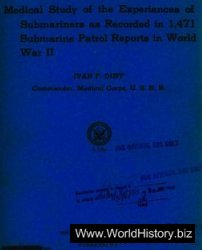Naval, military and air forces assigned to the operation codenamed “Overlord", the invasion of Europe, 1944.
Supreme War Council (1917—18 and 1939-40). Formed in November 1917 after the Italian collapse at Caporetto had made greater Allied coordination imperative. Its only substantial achievement was to create a general reserve of troops for the entire Western theatre. In 1939 Britain and France agreed to establish a Supreme War Council before the outbreak of war. This institution never acquired a permanent joint staff, but was otherwise reasonably successful in enabling the Allies to agree on broad plans for the conduct of operations in Western Europe and Scandinavia. Seventeen meetings were held between September 12 1939 and June 13 1940. BB.
Surface to Air Missile (SAM).
Missiles designed to shoot down aircraft were first experimented with in World War II but did not enter service until Nike Ajax batteries began to be installed in the USA in 1953. Nike Ajax was succeeded by Nike Hercules, both of which used command guidance, as did the first generation Soviet SA-2 missiles used in large numbers in combat in Vietnam and the Middle East. The performance of Egyptian and Syrian air defences in 1973 equipped with Soviet SA-2, -3 and -6 missiles was a major factor in the Yom Kippur War. Although the Soviet Union still deploys over 9,000 sams for home defence, the USA now only fields SAMS for tactical defence on land and at sea. The US Army has Patriot and the Navy the Aegis system. Both use advanced radars to command the missiles to a point where semi-active homing takes over. The “Standard” missile used in Aegis is the descendant of the Terrier/Tartar/Standard continuously developed since the 1950s. SAMS come in three broad categories: area defence systems with ranges of over about 24 miles (40km); point defence systems that generally operate within a 6-mile (10km) range; and hand-held systems like Stinger and Blowpipe with ranges of less than 3 miles (5km). EJG.
Surface to Surface Missile (SSM).
A missile designed to be fired from a land-based launcher or a ship at a surface target at land or sea. SSMS can be either ballistic or cruise in configuration and, if designed to engage precise targets such as ships, will be given some form of terminal homing using, for example, radar. The term ssm tends to be used for the shorter ranged tactical systems. Almost all SSMS rely on either an autopilot or an inertial navigation system for mid-course flight.
Surigao Strait, Battle of see leyte
GULF, BATTLE OF (l944).
Surveillance see electronic warfare; REMOTELY PILOTED VEHICLES; SATELLITES.
Sutherland, Lt Gen James W Jr
(b. l918). US. Commander, US Army XXIV Corps in Vietnam, from June 1970 to June 1971. For part of that time he also served as the senior US Army adviser to the Army of the Republic of Vietnam (arvn) I Corps Tactical Zone. He planned, coordinated and conducted American airmobile and aviation support of arvn forces in Operation “Lam Son 719”.
Suvla landings see Gallipoli.
Suzuki, Adm Kantaro (18671948). Jap. After a distinguished career in the Imperial Japanese Navy, Suzuki became Grand Chamberlain in 1929, thereafter acted as a moderating influence on national politics. In April 1945 he was made Prime Minister but failed to engineer peace until after the atomic raids.
Sweeney, Maj Charles W (b. l919). US. Pilot of the B-29 Bock’s Car which dropped the atomic bomb on Nagasaki, August 9 1945.
Swimming tanks. Variant of Sherman medium tank, fitted with twin propellers (“Duplex Drive”, or “DD”) and collapsible immersion shield, and thus with a limited amphibious capability. See also
TANK. S.
Swinton, Col Sir Ernest (18681951). Br. Swinton may justly be called “the father of the tank”. As an official war correspondent in
France in October 1914 he realized that an armoured vehicle might resolve the stalemate. It must be capable of destroying machine guns, crossing country and trenches, breaking through entanglements and climbing earthworks. He proposed that some Holt caterpillar tractors might be converted into fighting machines. The War Office was unenthusiastic, but Winston Churchill, then First Lord of the Admiralty, backed Swinton. The first naval experiments concerned cumbersome machines with large wheels and rollers in front designed to crush wire and cross trenches. Not until early 1915 was Swinton’s idea of caterpillar tractors re-examined. At the first trials, September 1915, a model called “Big Willie” made a good impression. Soon afterwards, as camouflage, Swinton coined the generic name “tank”.
Swinton was anxious that this new and potentially decisive machine should not be used prematurely with consequent loss of secrecy, but after the disastrous opening of the Somme campaign on July 1 1916 his protests were overruled. Some 50 tanks were sent over in August, but they were prone to mechanical breakdown and the crews were semi-trained and without tactical experience. First used on the southern sector on September 15, their surprise value was sacrificed without dramatic success. Only a handful of tanks reached the startline and apart from a much publicized advance through the ruined village of Flers, their performance was disappointing. Swinton’s invention proved its worth at Cambrai in November 1917. In 1934 he became Colonel-Commandant of the Royal Tank Corps. jBR.




 World History
World History









